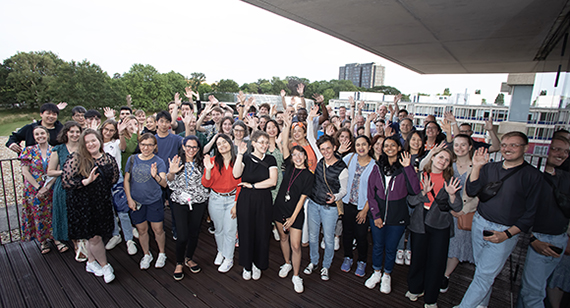Please note: This course will be taught in hybrid mode. Hybrid delivery of courses will include synchronous live sessions during which on campus and online students will be taught simultaneously. Recordings will only be available to online students for the length of the course’s duration for the purpose of catching up on missed content.

Ryan T. Moore is Associate Professor of Government at American University and Senior Social Scientist at The Lab @ DC. He is also a member of Evidence in Governance and Politics and a recent Fellow in Methodology at the US Office of Evaluation Sciences. Ryan’s research interests centre around statistical political methodology, with applications in American social policy. He develops and implements methods for political experiments, ecological data, missing data, causal inference, and geolocated data. Among his publications are sixteen peer-reviewed journal articles, a book chapter, and several software packages and applications. His work has appeared in Political Analysis, The Lancet, Nature Human Behaviour, the Journal of Public Policy, and the Journal of Policy Analysis and Management, among other outlets. Ryan received his Ph.D. in government and social policy, along with his A.M. in statistics, from Harvard University. http://www.ryantmoore.org
Course Content
Do campaign messages actually affect public opinion? Does a refugee’s religion affect support for her asylum application? Do legislators respond when made aware of district preferences? This course develops a framework and a set of tools centred around answering causal questions such as these. We lay foundations in the potential outcomes model, allowing us to identify causal inferences. We discuss why we might conduct field, survey, and laboratory experiments, best practices for designing and registering experiments, how to overcome common problems, and how to analyse experimental data. We will also address special topics such as interference and mediation. Using experiments as a foundation, we will examine and apply methods for causal inference from observational data, such as matching, regression adjustment, instruments, and discontinuity designs.
Course Objectives
Participants will gain understanding of the potential outcomes model, and how and why we often register and conduct experiments for causal inference. Participants apply this understanding to experimental design, and will analyse experimental and observational data with attention to causal questions. Throughout, participants will learn application through the R statistical language. This course is suitable for participants at a variety of levels, including exceptional undergraduates, master’s degree and Ph.D. students, and those with a Ph.D.
Course Prerequisites
Students should have encountered conventional topics in introductory statistics, such as null hypothesis significance tests, confidence intervals, and linear regression. We will reintroduce such topics as needed. Students should have some familiarity processing data with R or Stata, or be willing to learn.
Representative Background Reading
• Freedman, Pisani, and Purves, “Statistics”, 4th edition (2007) Norton, Chapter 1, pages 3-11.
Required Text
• Gerber and Green. Field Experiments: Design, Analysis, and Interpretation. WW Norton. ISBN: 978-0393979954.
Background Knowledge Required
Maths
Linear Regression – elementary
Statistics
OLS – elementary
Software
R or Stata – elementary
Students should have some familiarity processing data with R or Stata, or be willing to learn.


